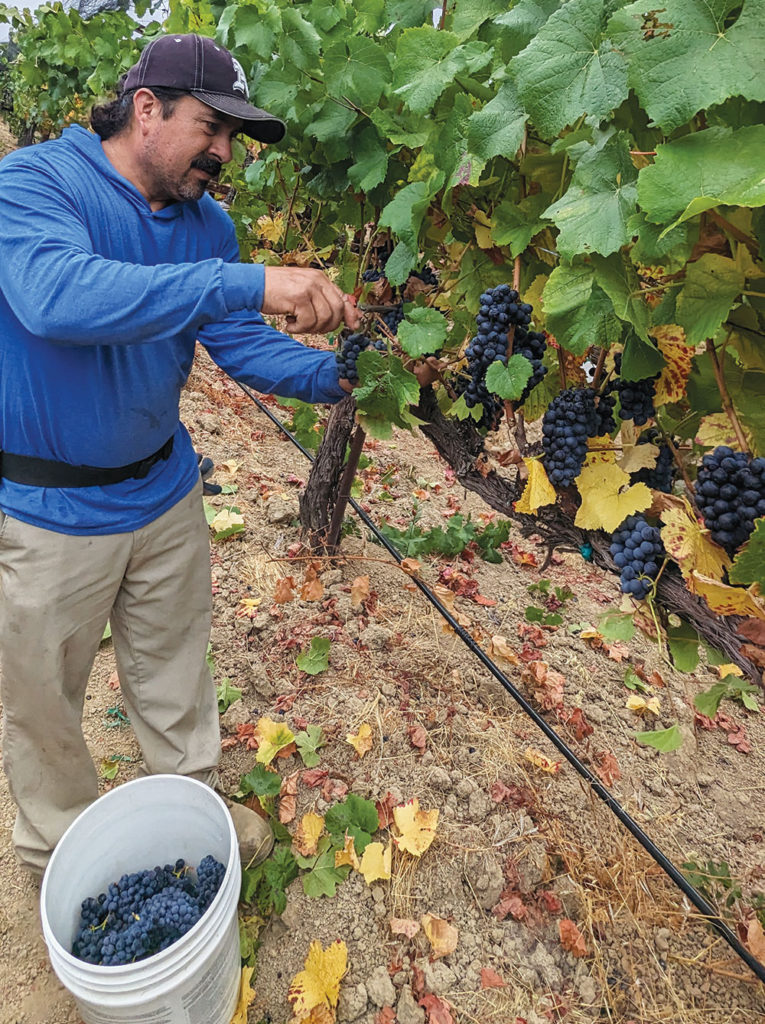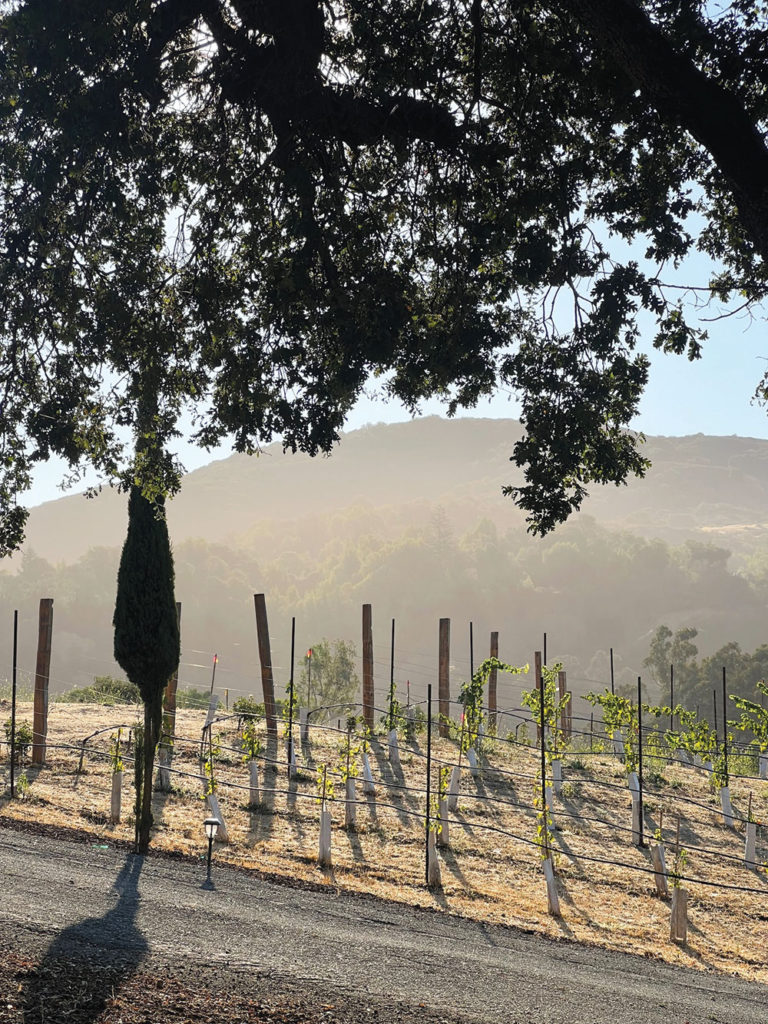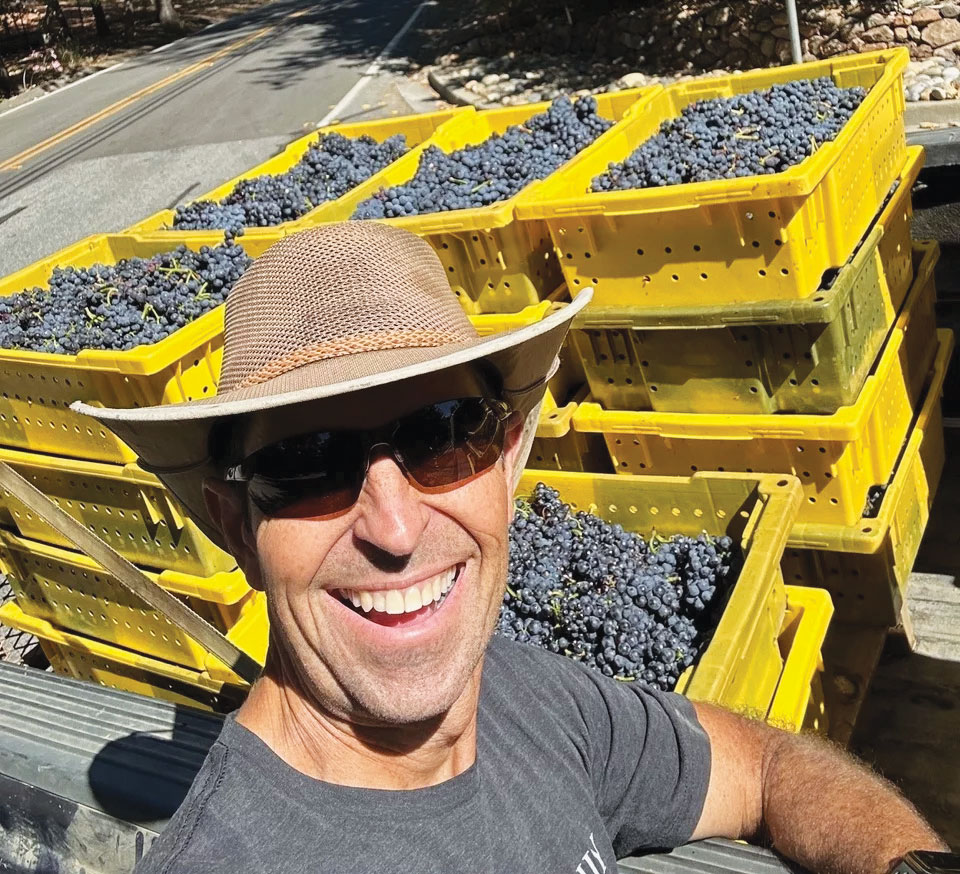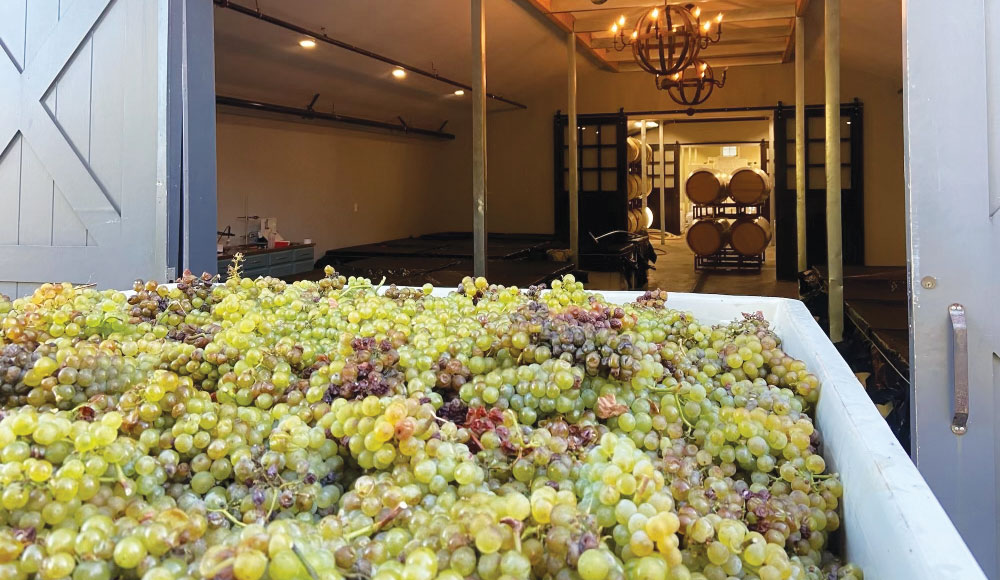The wine industry is experiencing a glut of grapes and bulk wine. Vineyards are being pulled out in the Central Valley and in parts of Europe. Many vines will not even be picked this year, making a field day for the birds. Vineyards here in our area have been removed as well, including one below Camel Hill on Bear Creek Road.
Others, including the Pichon Vineyard (formerly farmed by Burrell School Vineyards) above the Lexington Reservoir, and Heart O’ The Mountain, in Scotts Valley, have been abandoned. Incidentally, the latter used to be the home of Alfred Hitchcock.
When I visited the Sierra Foothills last week, in a vineyard that grows prized grapes for top Napa wineries, hundreds of birds were feasting in waves on the juicy ripe primitivo, cabernet sauvignon and malbec.
The owner told me that he grows 700 tons of grapes, but has thus far sold only 30 tons this season—and that was mostly sauvignon blanc. He didn’t even make red wine last year, as he’s got such a backlog in tank. In August, the largest winery in the region, Terra D’Oro, abruptly shut its doors and announced it was for sale. Many growers all over the state bemoaned the slowdown in grape sales, while wineries complained about a serious lack of foot traffic.
We are at the pinch point of various converging factors, among them increasingly negative press regarding alcohol, generational changes in consumption habits, and the plethora of wine alternatives that have come about in the last 10 years.


When large wine conglomerates like Vintage Wine Estates, owner of over two dozen brands, including B.R. Cohn, Cherry Pie, Cosentino, Firesteed, Laetitia and Windsor Vineyards, implode overnight, and only two bidders step up to feast on the carrion, you know there’s trouble afoot. In the past, the major players would have swooped in and created a bidding war for the assets. But those same bloated big boys were already full from opportunistic feasting over the past couple of years. The writing on the wall is becoming clearer.
When Gallo purchased Hahn’s brand and assets last year, but did not buy the Santa Lucia Highlands (Monterey) vineyards that produced those wines, it signaled that the mega giant was already full up on grapes. Consequently, Doctors Vineyard, Lone Oak and Smith & Hook, three revered names in grapedom, sought buyers. Although Lone Oak was subsequently purchased by Jackson Family, and Doctors was picked up by Riboli Family, all three sought homes for their fruit this year. Testarossa is a long-term buyer of Doctors Vineyard fruit, and winemaker Bill Brosseau expressed concern over how it would be managed going forward. Only time, and wine, will tell.
Bright Spots in Our Backyard
Wineries that are fairly new or have tasting rooms in high traffic areas, and who also have good social media and brand presence, are doing well. Up-and-coming wineries, like Alamitos in San Jose, find themselves running short of product. It doesn’t hurt that their wines have done extremely well at competitions. Owner Shaun Coleman told me, “Our sauvignon blanc is in demand, and our Touriga Cabernet blend, Malbec and our estate Syrah are club-only.”
Wineries with a solid wine club, like Perrucci Family Vineyards on Kennedy Road in Los Gatos, are grateful to have a decent crop this year. They ran a bit short last season, due to yellow jacket and mold damage. Co-owner Greg Perrucci reports all his estate fruit has been sold (he grows syrah, sangiovese and cabernet sauvignon). He’s hoping the pinot noir he gets from Regan Vineyard in Corralitos will come in strong, because it’s in high demand. He just had a grower dump a bunch of chardonnay on him that he is having trouble selling.


Several other small vineyards in our area also have fruit to sell, when, in the past, buyers jostled to get hold of some. And yet, vineyards are still being put in.
Many winemakers have cut way back on their production. Jeff Emery of Santa Cruz Mountain Vineyards revealed, “This is the smallest harvest I’ve had in years. I’m sticking to Santa Cruz Mountains AVA fruit, plus getting albariño from Monterey, and chenin blanc from Handley Vineyard in the Santa Cruz Mountains. I look like a genius because Chenin is suddenly a darling among wine connoisseurs.”
White Wines ‘Are Killing It’
Increasingly, winemakers report that white wines, besides chardonnay, continue to attract consumers. Ian Brand, who got his start in the Santa Cruz Mountains, runs a custom crush operation in Salinas. He’s bringing in the most acreage of albariño ever, and yet the crop is showing up light, due to strong winds at fruit set. He’ll have no trouble selling out.
“We have become an extraordinary white wine house,” says Brand, who brought in some Sémillon for his biggest client, Birichino, along with verdelho from Pearce Ranch, Melon de Bourgogne from Chalone and sauvignon gris and pinot gris from Eden Rift in San Benito, adjacent to Calera. “Across the board whites are killing it.”
Marty Mathis of Kathryn Kennedy and M. Mathis Winegrower, is very bullish on Godello, grown at Guichard Vineyard in Saratoga. He feels the climate matches that of Galicia, Spain, where the grape originated. Says Mathis, “That climate is very matched to Saratoga, minus the summer thunderstorm rains that they get and we never do. This is my most premium luxury white bottling.”
He was a bit disappointed to get a smaller than usual crop of albariño from his estate vineyard on Pierce Road. “Albariño has become the #1 alternative white for California,” says Mathis. He’s also recently planted sauvignon blanc at a new vineyard near the Lexington Reservoir, by the Cal Fire station above Los Gatos. It looks splendid.


Winemaker Dave Moulton at Burrell School Vineyards on Summit Road just brought in 5.5 tons of pinot noir for rosé and red wine. He’s still waiting for his Bordeaux varieties to ripen. He recently ripped out a big block of merlot for a parking lot.
Just across Summit Road, Wrights Station has already harvested their chardonnay. Winemaker Dan Lokteff tells us, “Yields are back to normal after two low years. Pinot was picked ‘on schedule,’ i.e. 9/7, on my birthday! Pristine fruit. Chardonnay was ready shortly after, rather than the usual two-week lag. That August heat really pushed things along. Perfect balance of sugar and acidity on this fruit.” He’s still awaiting cabernet franc, zin and sangiovese. “That cool week gave us a needed respite,” says Lokteff. “Should finish harvest over the next two weeks.”
Jim Cargill of House Family in Saratoga said harvest got off to “a very heavy start. No warm up, just a full sprint! Yields look very good, maybe slightly less than last year.” He brought in pinot noir from a vineyard in the Saratoga Hills in late August, and has been busy since. He’s grateful that this tasting site, Izumi Point, just had its permit renewed. Even if you make the best wine, if you don’t have a place for people to taste it, all bets are off.
So far, no seriously deleterious weather conditions have derailed Harvest 2024. Knock on wood. But it’s not over yet. And one thing’s certain: the birds are partying.



